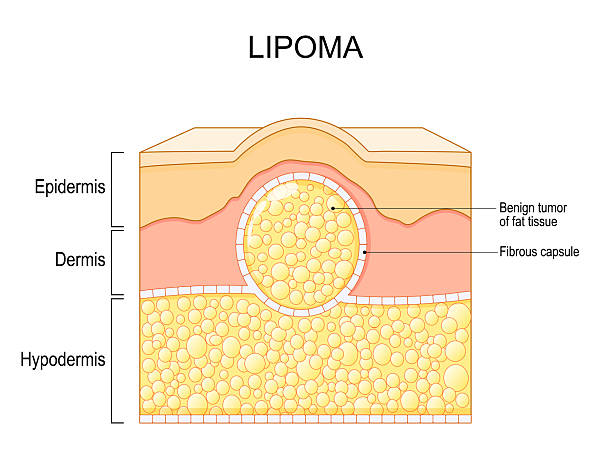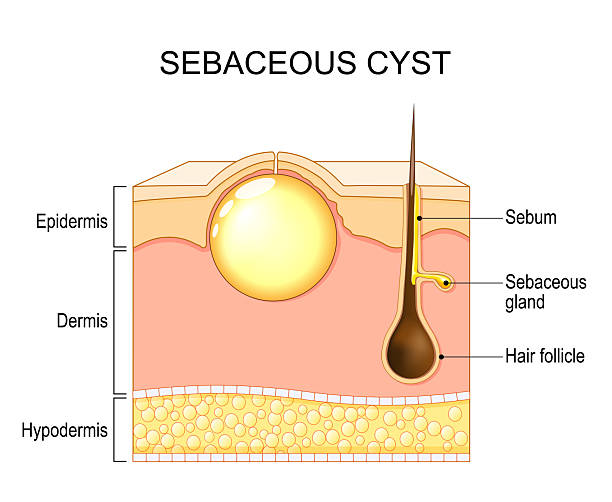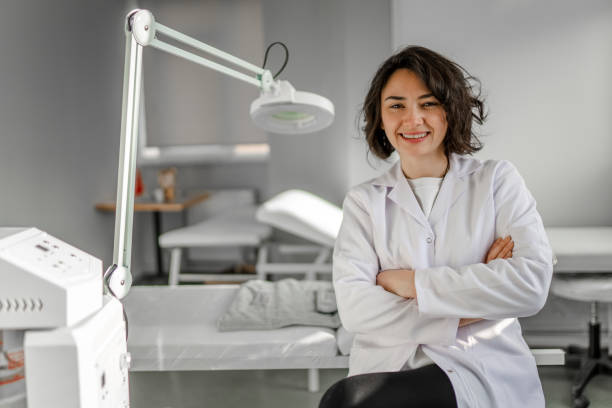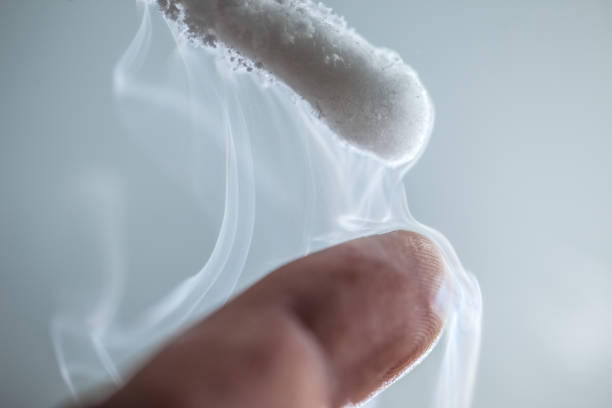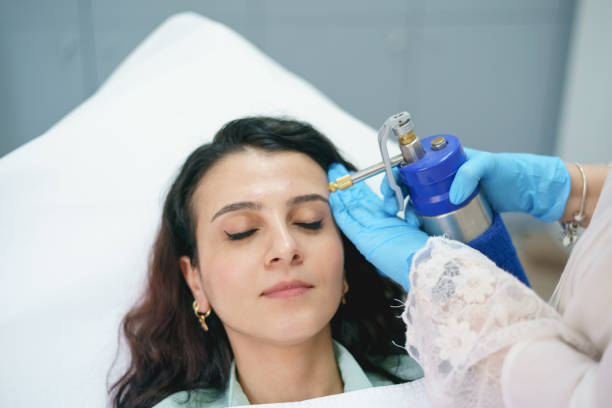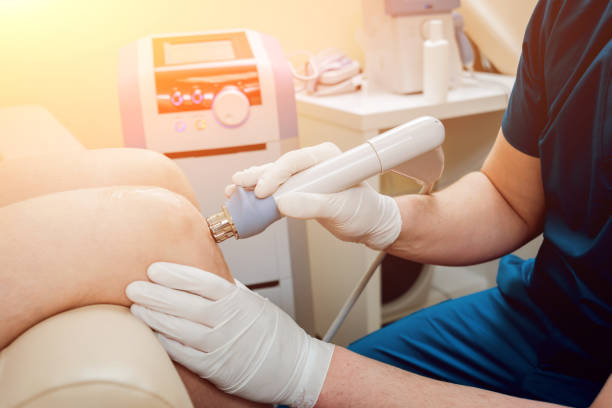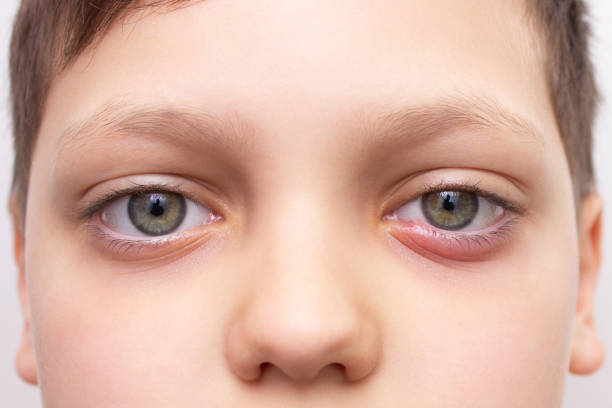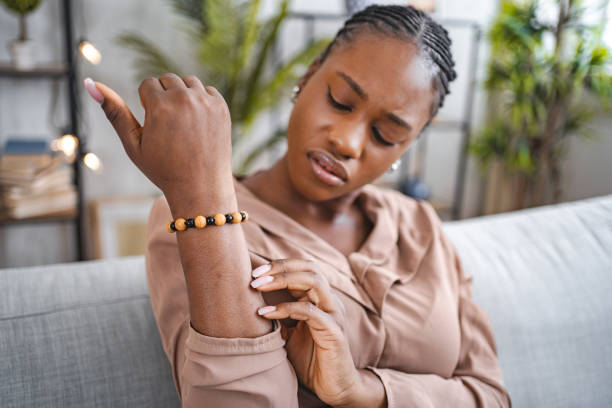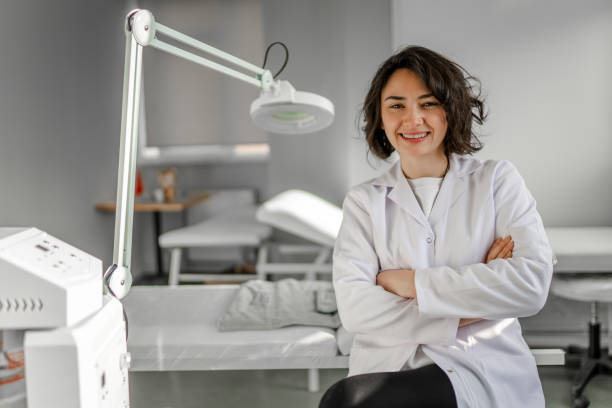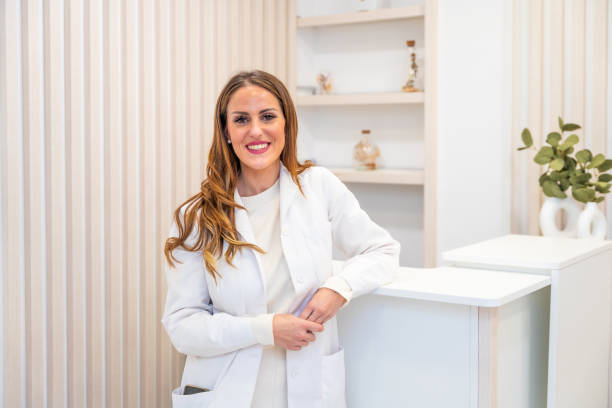Treatments Lipoma Removal: What to Expect from the Procedure | Revitalise London
Why Consider Surgical Lipoma Removal?
Lipomas are fatty structures that develop under the skin. Though most of the time they are harmless, they might get uncomfortable, enlarge or create noticeable bumps that cause people to seek treatment. That’s where surgical lipoma removal comes in. Among all options, it’s the best way to get rid of lipomas, especially those that are deep, painful or noticeable.
This treatment takes place in clinics and medical centres across the UK, and Revitalise London has its trustworthy facilities for it. However, many people feel nervous when they hear the word “surgery.” There are many unanswered questions for people, such as what the procedure involves, how much time it takes to heal and what the scar could look like if there is one.
In this article, we’ll walk you through everything you need to know about surgical lipoma removal. We’ll explain in easy steps everything about the procedure and what happens afterwards. You can also learn the situations where surgery is suggested, what you should be prepared for before and after and the reasons it is the most reliable treatment.
This guide will help you decide and prepare if you want to remove a lipoma.
When is Surgical Lipoma Removal Necessary?
Most of the time, lipomas are not dangerous and grow slowly, made of extra fat just below the skin. A lot of the time, lipomas are harmless and do not bother people, which is why removing them is not always necessary. However, there are certain situations where surgical lipoma removal becomes the best option.
First, if a lipoma is expanding fast or getting bigger, you should ask a doctor for advice. When a lipoma grows very fast, it might be painful, and doctors often advise a surgical procedure to examine and remove the tissue.
In some cases, if the lipoma is uncomfortable or painful, doctors may decide on surgery. Although most lipomas are painless, a few may push against nearby nerves or tissues and make you feel uncomfortable or limit your mobility. When surgery is performed, it can take away the reason for the pressure and improve the symptoms.
People also pay a lot of attention to their cosmetic appearance. Lipomas in noticeable parts of the body, such as the neck, arms or face, may decrease a person’s confidence. A lot of people decide to get surgery to fix their appearance and boost their self-esteem.
If a lipoma gets infected or inflamed, it might need to be surgically removed quickly so that no further complications occur. Signs that an infection might be present are redness, warmth, swelling or discharge.
When it is not clear what the issue is and cysts or tumours are possible, surgical removal helps to treat the tissue.
In summary, surgical lipoma removal is necessary when the lipoma is growing, painful, cosmetically concerning, infected, or requires diagnostic confirmation. Seeking help from a specialist at Revitalise London can assist in choosing the treatment that fits you the best.
Overview of Surgical Lipoma Removal Procedures
1. The Excision Surgery Process
This approach is used most often and is very reliable. The surgeon will make a small incision over the lipoma with local anaesthesia. The surgeon takes out the whole fatty lump to try to prevent the lump from coming back again. After that, the surgeon stitches the wound shut. This solution is suitable for big or deeply rooted lipomas and gives long-term results.
2. Minimal Incision
For lipomas that are not too large, surgeons might go for a small cut instead. The surgeon makes an opening so small that it causes less scarring, and patients heal faster. Even though this procedure looks good, it may not be suitable for big lipomas.
3. Liposuction-Assisted Removal
It is done by putting in a thin tube to remove the unwanted fat. The operation causes less scarring and is done more quickly than the standard type of excision. However, since not all the fatty cells are removed, the lipoma may come back.
Pre-Surgical Assessment
A doctor will check the size and location of the lipoma before performing the surgery. An ultrasound or MRI scan may be done to visualise the condition. At this stage, doctors choose the best surgical approach to avoid any difficulties.
How Long Will The Procedure Last: Kind Of Anaesthesia Needed
It usually takes anywhere from 30 to 60 minutes to remove a lipoma surgically. The operation area is numbed using local anaesthesia, so patients will not feel any pain. Most patients can leave the hospital soon after surgery, with not much time spent recovering.
Recovery and Aftercare After Surgical Lipoma Removal
It is easy for doctors to remove a lipoma, but proper care after the surgery is needed to achieve the best results and avoid problems. This is what you can count on and how to look after yourself after the procedure.
Taking Care Immediately After the Procedure
Immediately after the lipoma surgery, the area will be covered by a sterile dressing or bandage. It keeps the wound free from infection and clean. You might notice some swelling, bruising or a little bit of pain in the area, and this is usual. Patients usually notice these symptoms are at their worst in the first two days, and after that, they start to improve. For the first two days, you can comfort yourself with cold compresses and take the pain medicine that your doctor has recommended. Do not use heat, because it can cause the swelling to rise.
Taking Care Of Wounds And Washing Regularly
It is essential to care for a wound properly so it does not get infected and can heal. Make sure the surgery area is always clean and dry. Always follow the doctor’s directions for changing the dressing on your wound. Most of the time, dressings should be changed every day or whenever they get wet or dirty. Refrain from letting the wound touch water, such as from swimming or baths, as long as you have stitches or until the wound heals. You should cover or dry the wound as much as possible while showering, if it is suggested by your doctor.
Managing Pain and Discomfort
Although the majority of patients have only a little discomfort after lipoma removal, how each patient feels pain is not the same. During the first days, it’s helpful to take painkillers as directed by your doctor. When you observe more pain, redness, swelling or pus coming from the injury, these may be indications of infection, and you must contact your healthcare provider immediately. When diseases are treated early, people heal faster and do not develop severe complications.
Going Back to Your Daily Schedule
The time it takes for you to return to normal activities depends on how big and where the lipoma is located. In most cases, people can start easy activities such as walking or going to the office after 2-3 days. Still, you should not do strenuous exercise, heavy lifting or strain the surgical area for at least one to two weeks unless your surgeon advises you differently. It is important to rest in the first phase when your body is healing.
Surgical Lipoma Removal Follow-Up Appointments
Most patients go for a follow-up appointment within 7-14 days after the surgery. At this visit, your doctor will look at the healing progress of the wound and remove stitches that were not made to dissolve. This is significant since the doctor can find out about any signs of infection, wound opening or other concerns right from the beginning. Remember to go to all your follow-up appointments and talk about your worries during recovery.
Scar Treatment and Slow Healing of
Surgical Lipoma Removal
When your wound is healed and the stitches are out, caring for the scar should be your primary concern. Moisturising the affected area with gentle products can assist in the smoother healing of the skin. Silicone gel sheets and topical solutions are sometimes helpful for people in reducing scars. Don’t let the scarred area get too much sun, since this might cause the scars to darken and become more visible. Recovery is not the same for everyone, but most patients notice their skin looking much better in a few weeks to several months.
By following these recovery and aftercare steps carefully, you can expect a smooth healing process and excellent results from your surgical lipoma removal.
Why Choose Revitalise London for Surgical Lipoma Removal
When it comes to surgical lipoma removal, choosing the right clinic is crucial for safety, comfort, and excellent results. Among the top providers, Revitalise London stands out for giving patients a respected, personalised and reliable lipoma treatment. Here’s why Revitalise London is the best choice for your surgical lipoma removal needs.
Surgeons With Experience And Excellent Skills
At Revitalise London, surgical lipoma removal is performed by highly trained and experienced surgeons who specialise in minor surgical procedures. The doctors in our practice are highly trained to take out lipomas wherever they are and whatever their size. Every surgeon adheres to specific guidelines to help patients heal as quickly as possible and with little scarring. You can depend on professionals who want to offer the best treatment outcomes.
Providing Our Patients With Thorough Advice And Special Attention
Every person’s medical needs are not the same. For this reason, Revitalise London always provides thorough consultations before any procedure is done. While you are being assessed, our experts will review your lipoma, review your health history and go over all available treatments. We invite patients to express their uncertainties and doubts, so you are comfortable and well-informed about the plan. Because of personalised care, your anaesthesia and aftercare will be chosen with your needs in mind.
Top-quality Facilities and Technology
Revitalise London has modern medical equipment and follows the strictest rules for hygiene and safety. The clinic is spotless, cosy and made to help patients feel relaxed. Advanced technology and skills are applied to remove lipomas easily and with very little pain and recovery. Because we update our skills and knowledge regularly, you receive advanced and up-to-date medical care.
Ensure That Patients Feel Safe and Comfortable.
Even though surgery can be worrisome, Revitalise London makes the patients feel safe and looked after. As soon as you come in, our caring team creates a warm and calming atmosphere for you. We apply local anaesthesia to make sure the treatment causes little to no pain. After surgery, we make sure to respond swiftly to any problems that you might have. Careful use of safety measures helps prevent patients from facing infection and other issues.
Detailed Support After Rehabilitation
The process continues even after you have had your lipoma operated on. Revitalise London is there to give you comprehensive assistance as you recover and heal. We explain in detail how to care for a wound, control pain and limit movements. Appointments are arranged afterwards to follow your healing and remove stitches if necessary. Our team is always ready to talk to you or help you with any problems that may arise during your recovery.
Because it is situated in the centre of London, Revitalise London can be reached by patients from all over the UK and the world. To fit your busy schedule, we make appointments available in the evening and on weekends. The simple booking process we have helps you receive medical attention punctually.
Feedback And Success Stories From Patients of Surgical Lipoma Removal
Many patients who came to Revitalise London for lipoma removal have shared that they were happy with the results. Because we focus on great results, kind treatment and transparent sharing of information, the community respects us. We advise new patients to check our testimonials and look at pictures showing the results of our work.
Choosing Revitalise London for your surgical lipoma removal means placing your health and comfort in expert hands. By offering both excellent care and personal attention, we make sure our patients receive safe, effective and satisfactory results. Make an appointment with us for your consultation and move closer to a healthier and more comfortable future.
Why Is Lipoma Biopsy and Histopathology Important
Lipomas are not all the same, and even though most are not dangerous, you should still know when you need further tests. At times, your doctor may ask for a biopsy or histopathological check of the lipoma that was removed.
What exactly is a Lipoma Biopsy?
Taking a sample of the lump tissue by inserting a needle or during surgery is called a lipoma biopsy, and this sample is then sent for analysis. This shows that the lipoma is not harmful.
What makes Histopathology important?
Although it is rare, there are soft tissue tumours that act like lipomas but might be cancerous (such as liposarcomas). A microscope exam in histopathology allows experts to see the cells and decide whether any malignancy is present. As a result, you both will be reassured about the treatment.
What are the circumstances that call for it?
- When the size of the lump is more than 5cm
- Grows rapidly
- It feels stiff, complicated or even painful.
- This is found very deep in the body.
Some images suggest inflammation or unusual changes.
Peace of Mind after Surgery
Taking this step along your lipoma removal process may offer you extra reassurance and safety. In most situations, the findings show that a benign lipoma was present, and the knowledge is beneficial.
Medical Imaging for Lipoma Diagnosis and Planning the Right Treatment
Before surgery, imaging is beneficial for identifying and preparing for the treatment of lipomas.
In what cases should imaging be done?
Many lipomas do not need imaging, but your doctor could recommend it if the case is complicated.
- Check how deep and extensive the lipoma is.
- Be sure to check how close the nerve, muscle or blood vessel is to the incision.
- Make sure the lipoma is not another type of growth.
Methods of Imaging That Are Frequently Used
Sometimes, the first step is an ultrasound since it is safe and can distinguish between solid and liquid in the lump.
- Imaging with an MRI is beneficial for identifying deep or intramuscular lipomas.
- CT Scans are necessary for lipomas that are hard to spot through other methods or when an MRI isn’t possible.
Imaging Helps Improve the Outcomes of Surgery
Before operating on a lipoma, surgeons use imaging to make sure they have the right plan and minimise risks near important areas. It leads to fewer problems, makes sure all cancer cells are removed and lessens the chances of the cancer returning.
Conclusion: Start Moving Forward Toward the Removal of Your Lipoma Safely
Surgical lipoma removal remains one of the most effective and reliable treatments for eliminating unwanted fatty lumps. Dealing with discomfort, appearance, or not knowing what a growth is, this procedure gives you peace and eases your symptoms. Familiarising yourself with every step, starting from diagnosis and viewing images to having the operation and recovering, can make you more confident.
Picking the right clinic and a qualified provider is very important. A skilled surgeon helps prevent scars, decreases the risk of cancer coming back and smoothens the patient’s recovery process. To increase safety and accuracy in diagnosis, images and microscopic examination of body tissues help rule out serious but rare diseases.
If you live in London or its nearby regions, make sure to get a lipoma checked. Prompt assistance from an expert doctor can help. Surgical lipoma removal is more than a cosmetic fix — it’s a proactive move toward better health and comfort.
Are you ready to deal with your concerns? Contact an established clinic to start on your path to clearer, more confident skin and lasting confidence.



